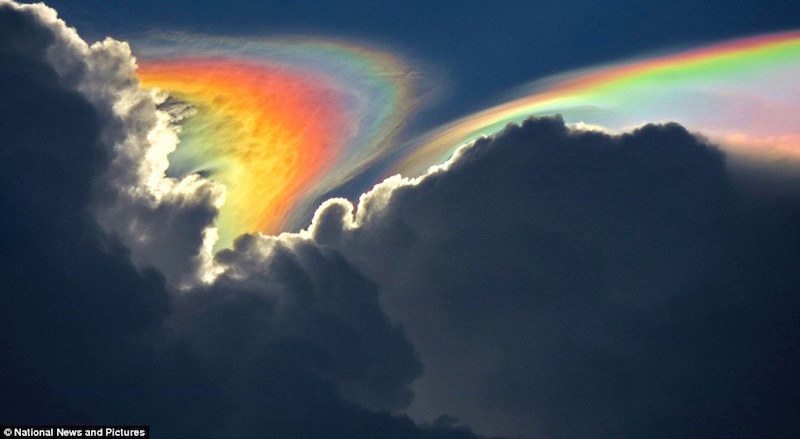Fire Rainbow
Episode #8 of the course “Rare and Unusual Weather Phenomena”
The highest layers of Earth’s atmosphere form clouds so cold they freeze into ice crystals. When the sun or even the moon is at the right angle above these clouds, the light can be refracted by the ice droplets in a prism effect, creating a spectral display that is often called a “fire rainbow.” Although not exactly the same as a rainbow, cirrus clouds make the colors appear wispy and trailing, as if made of fire. The phenomenon is actually known as a circumhorizontal arc, and the term “fire rainbow” came into popular usage after 2006.
Photographed as a natural occurrence in many places throughout the world, fire rainbows do not frequently happen above or below 55 degrees latitude. Because the sun has to hit the clouds at a specific angle, there are many places in the world where conditions rarely exist to produce this spectacular type of rainbow in the clouds. They occur more frequently in places like Los Angeles, California, which receives more sunlight on average per year than other places like London, England.
Fire rainbows can be huge, spanning hundreds of feet of clouds. Their effect is so widespread that observers on the ground see the clouds as being parallel to the ground, or the colors as being in all the clouds rather than some. The conditions of cloud coverage, atmospheric temperature, and sunlight at the right angle affect how frequently they occur, but fire rainbows are often photographed from airplanes as flyers experience the right conditions.
Share with friends

